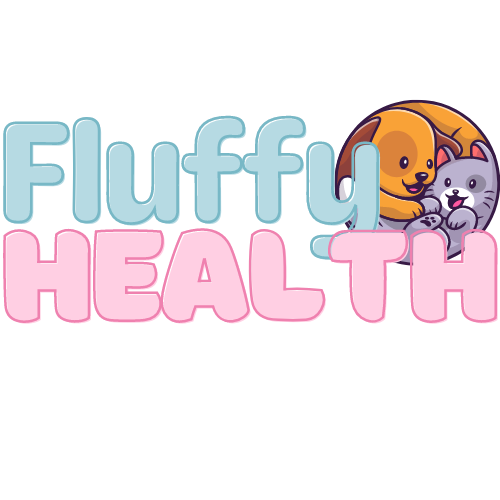What is Rabies in dogs? What causes Rabies in dogs? As a dog owner hearing about this serious disease, you must ask yourself such questions. Rabies is a serious and well-known disease that poses a significant threat to humans, dogs, and other warm-blooded animals.
In today’s article, we will discuss and answer questions such as what Rabies in dogs is, explain the causes of this dangerous virus, and discuss the common symptoms that may appear in infected animals. We’ll discuss the methods of transmission and the preventive measures dog owners can take to protect their dogs. Understanding Rabies is important to protecting your dog from this disease.
By the end of this article, you will be better at recognizing the signs of Rabies and know the actions to take should your dog ever be at risk. It’s not just about protecting your dog’s health but also about protecting your community from spreading this deadly disease. Without further ado, let’s begin our article by knowing what Rabies is in dogs.
Table of Contents
What Is Rabies in Dogs? How Does Rabies Spread in Dogs?
First, let’s understand what Rabies is all about! Simply, Rabies is a deadly virus that primarily affects the brain and central nervous system of warm-blooded animals, including dogs, cats, and humans. It severely impacts the grey matter of the brain and often spreads to the spinal cord, showing just how destructive the virus can be to an animal’s nervous system.
When a dog contracts Rabies, the symptoms reflect severe neurological damage. The virus initially enters through the bite of an infected animal. It travels from the wound to the muscles, then progresses to the peripheral nerves, eventually reaching the central nervous system and spinal cord.
This zoonotic virus can be transmitted from animals to humans. The most common transmission occurs through bites from infected animals such as foxes, raccoons, bats, or skunks. The Rabies virus is present in the salivary glands of infected creatures, making transmission possible through saliva during a bite or even a scratch.
Despite the horror Rabies can invoke, it is preventable. Yet, the World Health Organization reports that Rabies causes more than 59,000 human deaths annually worldwide, mostly in regions where dog Rabies is common and vaccination efforts are insufficient.
Rabies is notorious for causing profound behavioral changes in infected animals:
- Furious Rabies: This form results in extreme behavioral changes, such as aggression and a greater tendency to bite.
- Paralytic Rabies: Also known as “dumb Rabies,” this type leads to symptoms such as weakness, loss of coordination, and eventually paralysis.
The initial viral infection may not show symptoms for up to a month. However, once symptoms develop, they signify that the virus is advancing rapidly, leading to severe complications. It’s also important to note that Rabies is nearly always fatal once symptoms are present, underscoring the importance of timely vaccination.
Each year, Rabies results in the deaths of millions of animals and poses significant public health risks. However, it is entirely preventable through vaccination.
In this article, we will cover several points about Rabies:
- Causes: How Rabies is transmitted and the risk factors involved.
- Symptoms and Types: Recognizing the signs of Rabies and understanding its different forms.
- Diagnosis: Methods used to diagnose Rabies in dogs.
- Risk Factors: Evaluating the likelihood of your dog contracting Rabies.
- Treatment and Prevention: Discussing treatments and preventive measures to protect dogs and humans.
- Rabies Facts: Essential facts about Rabies and its global impact.

What Causes Rabies In Dogs?
Before we discuss the symptoms of Rabies in dogs, it’s important to understand the underlying causes of this dangerous virus. Rabies transmission typically begins with an aggressive encounter, often a fight between animals. Suppose your dog has been bitten, scratched, or has come into direct contact with a potentially rabid animal. In that case, you must immediately take action by taking your dog to the veterinarian for preventive treatment as soon as possible. This is critical because the prognosis for Rabies, once symptoms develop, is extremely poor.
As we mentioned before, the virus is most commonly passed through the saliva of infected animals via bites. Wild animals like foxes, raccoons, and bats are frequent carriers. It is important to note that transmission can also occur if infected saliva comes into contact with any open wounds, such as a scratch. Although less common, Rabies can also be transmitted through contact with the blood of an infected animal.
After entering the body, the Rabies virus remains inactive initially, taking refuge within muscle cells near the entry point. It then begins to multiply and makes its way to the central nervous system via peripheral nerves. This critical phase can take up to a month, though symptoms typically appear around ten days after infection.
Rabies Symptoms In Dogs & The Types
As discussed earlier, Rabies in dogs can manifest in two major forms, each beginning with mild symptoms that are easy to overlook during the initial three-day period. Recognizing these early signs is important because, after this phase, the disease progresses rapidly into one of the more severe forms.
Paralytic Rabies: This form is characterized by initial weakness and loss of coordination in dogs, which can escalate to complete paralysis. The onset of paralysis is often subtle but worsens quickly, making it vital to observe any changes in your dog’s movement or strength.
Furious Rabies: True to its name, this form causes dramatic behavioral changes. Affected dogs may become unusually aggressive, showing a propensity to bite or attack other animals and even their owners.
Symptoms Across All Forms:
- Fever: A preliminary sign that can be easily missed.
- Jaw Dropping: An inability to close the mouth properly.
- Seizures: Sudden, uncontrolled electrical disturbances in the brain that can lead to convulsions.
- Pica: The consumption of non-food items is indicative of neurological distress.
- Difficulty Swallowing: This can lead to drooling or choking when attempting to eat or drink.
- Changes in Bark: The dog’s bark may sound different in tone or volume.
- Behavioral Changes: This includes uncharacteristic shyness, increased aggression, excessive excitability, persistent irritability, and hydrophobia (fear of water), which is a classic sign of Rabies.
According to the Centers for Disease Control and Prevention (CDC), Rabies is almost invariably fatal once clinical symptoms appear, hence the importance of post-exposure prophylaxis (PEP). The CDC also reports that Rabies causes tens of thousands of deaths worldwide every year, primarily due to bites from infected dogs.
WARNING: Do not wait for symptoms to appear. If you suspect your dog has been infected or involved in a fight with another animal, contact your veterinarian immediately. Early intervention with Rabies vaccinations and treatment can be life-saving.
Is My Dog at Risk Of Getting Rabies?
Rabies is a disease that can be stopped by a vaccine. Even if your dog has gotten its shots, it’s still a good idea to see the vet if it gets bitten or scratched by another animal. The vet might give your dog an extra shot to keep it safe.
Dogs with Vaccines: If your dog has been vaccinated against Rabies, it’s well protected. But if another animal bites or scratches your dog, you should still go to the vet quickly. The vet may give your dog a booster shot just to make sure it stays safe.
Dogs without Vaccines: Dogs that haven’t had their Rabies shots are at a bigger risk of getting the disease. This risk is even higher if they spend much time outside without you watching them. These dogs can easily run into wild animals that carry Rabies.
What Increases the Risk?
- Living near woods: Dogs living near forests might run into wild animals like raccoons, bats, or skunks with Rabies.
- Meeting other animals: Dogs that wander around on their own can meet other animals that might have Rabies.
Staying outside alone: Dogs left outside alone can bump into animals with Rabies. It’s very important to make sure your dog gets its Rabies shots regularly. This keeps your dog safe and healthy. You should also take your dog to the vet for regular check-ups. This way, you can be sure your dog is healthy and safe from diseases like Rabies.

How To Diagnose Rabies In Dogs
Diagnosing Rabies in dogs is challenging because there isn’t a test that can tell us for sure if a dog has Rabies while it is still alive. The most accurate way to diagnose Rabies is by examining the brain tissue. Still, unfortunately, this can only be done after a dog has passed away.
If you think your dog might have Rabies, it’s very important to act quickly:
- Contact Your Veterinarian: Tell your vet right away about your concerns. They can guide you through the next steps.
- Keep Everyone Safe: If possible, put your dog in a cage to prevent it from hurting anyone or running away. This helps protect both you and your dog.
- If Your Dog is Aggressive: If your dog is very aggressive or tries to bite, it’s safer to call Animal Control for help. They are trained to handle such situations safely.
Once you take your dog to the vet, they might give your dog a booster shot of the Rabies vaccine if it’s already vaccinated. Then, they will usually recommend keeping your dog away from other animals and people for about ten days. This is called quarantine. During this time, your vet will watch your dog for signs of Rabies or other diseases that can make dogs act aggressively.
Remember, seeing your dog get into a fight with a wild animal is a big clue that it might have Rabies, especially if that animal could have been rabid. If this happens, tell your vet about it right away.
Rabies Treatment & Prevention In Dogs
Now that we’ve discussed Rabies in dogs and its symptoms, it’s important to discuss how to treat and prevent this deadly virus. Unfortunately, once a dog shows symptoms of Rabies, there is no cure, and the disease is almost always fatal. The best way to do Rabies management is prevention through vaccination.
Vaccination: Regular vaccinations are the most effective way to protect your dog from Rabies. Keeping your dog up-to-date with Rabies vaccinations not only protects them but also helps prevent the spread of the virus to humans and other animals.
Post-Exposure Vaccination: If your dog is exposed to Rabies, your veterinarian will administer a booster vaccine to help fight the virus, even if your dog has been previously vaccinated.
Quarantine: Unvaccinated dogs that have been exposed to Rabies may be required to undergo a quarantine period of up to six months to monitor for symptoms. This is a precaution to prevent the spread of the disease.
Some Facts About Rabies In Dogs
Rabies remains a serious public health problem worldwide. Here are some facts and statistics to better understand the impact of Rabies and the importance of prevention:
- Global Impact: According to the World Health Organization (WHO), Rabies causes approximately 59,000 human deaths annually across the globe. Over 95% of these cases are in Asia and Africa.
- Transmission Sources: Dogs are the main source of Rabies transmission to humans, contributing up to 99% of all Rabies transmissions.
- Child Vulnerability: Children are particularly at risk, accounting for up to 40% of people bitten by potentially rabid animals. Children are more likely to be bitten by dogs and are also less likely to report minor bites or scratches.
- Vaccination Efficacy: Vaccinating dogs is the most cost-effective strategy for preventing Rabies in humans. Studies have shown that widespread dog vaccination can drastically reduce cases of Rabies in humans.
- Economic Burden: Rabies has a significant economic impact, with millions spent annually on post-exposure prophylaxis (PEP) and Rabies prevention measures. This includes the cost of vaccines, immunoglobulin, and the medical costs associated with administering treatments.
- Preventive Measures: The Centers for Disease Control and Prevention (CDC) highlights that Rabies vaccination and animal control programs have effectively controlled Rabies in domestic dogs in the United States, where Rabies in wild animals, particularly bats, remains a concern.
Recognizing Rabies In Wildlife
Recognizing signs of Rabies in wildlife is also important if you live near wood, for example, to prevent the spread to domestic animals and humans. Important symptoms you might notice in wild animals might include:
- Unusual Behavior: Wild animals that are typically nocturnal are active during the day, showing no fear of humans or appearing unusually tame.
- Aggression: Animals may act irritably or aggressively without provocation.
- Difficulty Moving: Paralysis or coordination problems, such as drooping wings in bats or an unsteady gait in raccoons, are common.
- Excessive Salivation or Frothing at the Mouth: A classic sign of advanced Rabies.
If you observe wildlife exhibiting these behaviors, it is important to keep your distance and immediately report the sighting to animal control or local wildlife authorities.
Legal Implications Of Rabies Incidents
When a dog is suspected of having Rabies or has bitten someone, dog owners face certain legal responsibilities that are very important to follow:
- Mandatory Reporting: In many places, you are required to report any incident involving a dog bite to local health authorities. This helps monitor potential Rabies cases and take appropriate public health measures.
- Quarantine Requirements: If your dog is suspected of having Rabies, the law may require it to be quarantined for a specified period, usually at a veterinary hospital or an approved animal shelter, to monitor for symptoms.
- Liability for Bites: Owners may be held liable for medical costs and other damages if their dog bites someone, especially if the dog is not vaccinated against Rabies or if the owner was previously aware of the dog’s aggressive behavior.
Rabies Myths vs. Facts
Several myths about Rabies can hinder proper prevention and treatment. Here are some common misconceptions and the facts to counter them:
- Myth: Rabies can be treated with home remedies or over-the-counter medications. Fact: Rabies is almost always fatal once symptoms appear. The only prevention is through vaccination, and post-exposure prophylaxis is necessary after a potential Rabies exposure.
- Myth: You can tell if an animal has Rabies just by looking at it. Fact: Rabies cannot be diagnosed by appearance alone. Symptoms vary, and only a laboratory test can confirm the presence of the virus.
- Myth: Rabies is only transmitted by dog bites. Fact: Rabies can be transmitted by any mammal, including bats, raccoons, skunks, and cats. Transmission can occur through bites, scratches, or open wounds exposed to saliva from an infected animal.

What Is Rabies In Dogs? What Causes Rabies In Dogs? The Conclusion
To effectively combat Rabies, it is important to maintain regular vaccination schedules for pets.. Look for vaccination drives and clinics that offer free or low-cost options, which are often provided by animal control agencies or local health departments. This proactive step is very important not only for protecting your pets but also for protecting your family and community.
If an animal bite occurs, whether from a domestic pet or a wild animal, immediate medical consultation is necessary. For pet owners, informing your veterinarian and local health officials can help manage the situation safely and legally if your dog bites someone. Always verify the vaccination status of any biting animal when possible, and provide this information to healthcare providers to ensure appropriate treatment is administered.


This vaccination is so very important. I live in Mexico, and in some areas rabies appears to still be prevalent, but in my state there have been no reported cases over the last 15 years, and the vets confirm that there is no rabies here anymore. The government also does vaccination campaigns sometimes and gives free rabies shots.
This information you’re giving is very important. So many people are still not vaccinating their dogs, which is so irresponsible …
Vaccination is very important for everyone not only animals, but it also protects those pets from dangerous diseases. I hope one day everyone will understand how important vaccination is and protect their pets with this simple act.
Interesting information, Thank you
Your welcome, I am glad you found it helpful.
I am a doctor and I can tell you, you are right Rabies can be so dangerous on both Humans and Animals, People should understand that and start to take it seriously regarding vaccinating their pets especially dogs as more than 90% of cases we see in hospitals related to dogs bites. I enjoyed your article it is so informative and I want to read more about such diseases that related to both Animals and humans health.
Yes, I agree with you it is important for us nowadays to pay attention more to the facts and keep our pets healthy to have a healthy and happy life ourselves.
I am glad that you liked it. There will be more posts soon.
This was really interesting information thank you ! 🙂
You are welcome, I am glad you enjoyed reading the information.
This is why vaccines are necessary and important! Too many people out here in the US thinking that they’re smarter than everyone else by refusing to vaccinate themselves and their kids. Now we have a measles outbreak in some parts of the country. Can you believe it?
Please vaccinate your animals, children and yourselves!!! So much pain can be avoided, even if the shots sting!!!
I can not agree more, people nowadays need to understand how important vaccines are, especially with so many diseases in our life! Our bodies already became weak against such diseases so we need to be careful and take care of our health more as well as our pets.
Mohammad, I’ve read your blog post and found the information very interesting. You have provided great details and warnings for people about the danger of rabies. I agree that the warning to not wait to take your dog to the vet is very important. Also, many people do not realize that those wild animals are frequent carriers of the virus. Good job. -shirley
Yes, People should be more considerate and stop second thinking about their pet’s health, I am glad you took your time and enjoyed reading it.
Thank you.